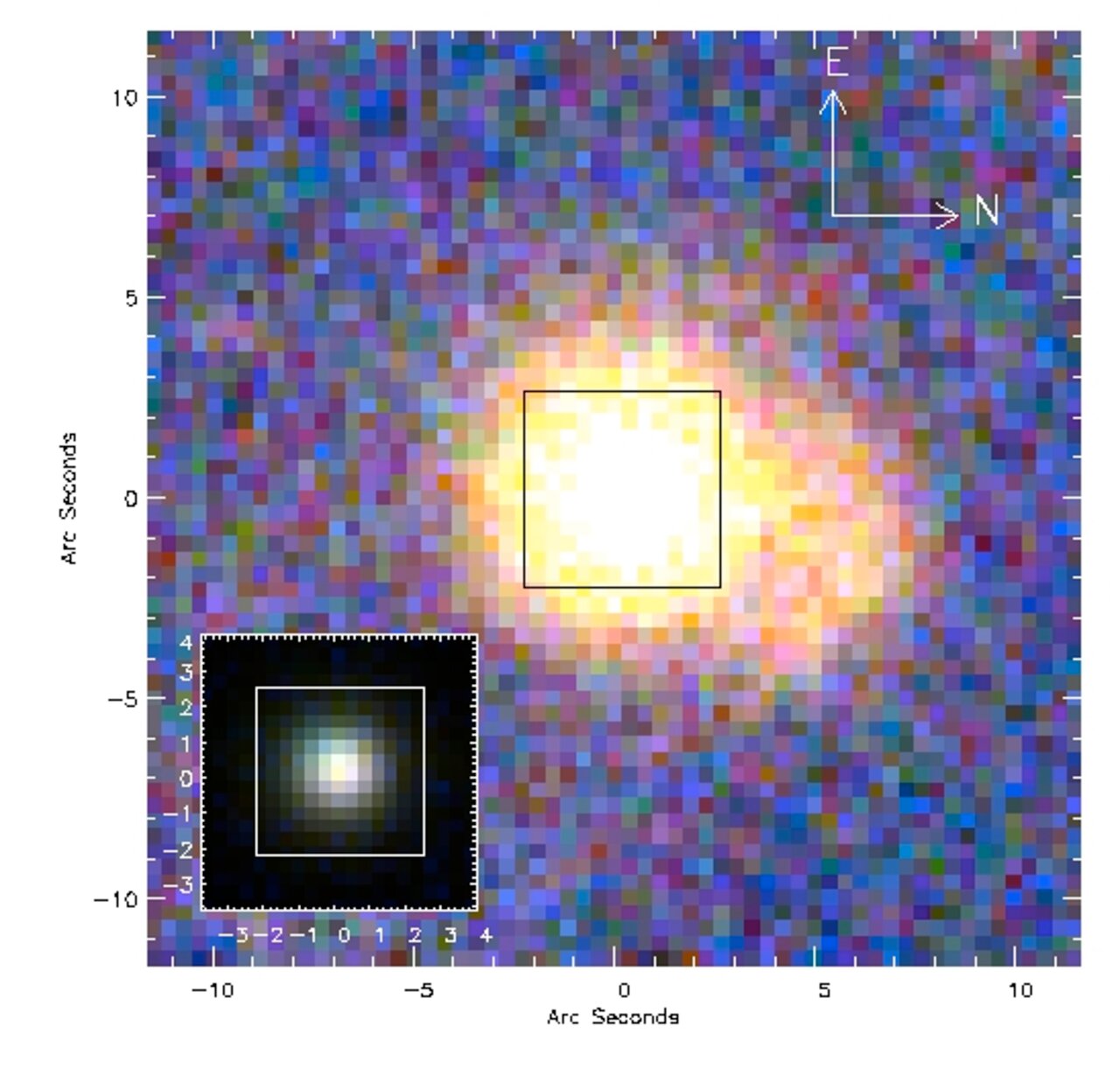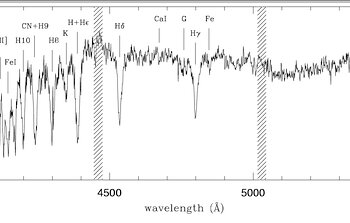GMOS-South Probes Gas and Stellar Dynamics in Post-Merger Galaxy
February 23, 2005

About 500 million years ago a spheroidal galaxy captured a small gas-rich galaxy in a merger that led to a burst of star formation. Using the integral field unit (IFU) on GMOS-South, Mark Swinbank (University of Durham, UK), led an international research team to explore this merging system that is still in the process of digesting the gas and stellar components of the two original galaxies.
The galaxy SDSS J101345.39+011613.06, known simply as “E+A” (geminiann05002a), has a redshift of 0.1055, corresponding to a distance of roughly 490 Mpc (or 1.6 billion light-years). This hybrid galaxy has a disturbed morphology and shows signatures of both old low-mass stars (spectral type K) and massive but short-lived stars (spectral type A) distributed throughout. However, the youngest and most massive ones—the OB-type stars—are missing, which indicates that the last star-forming event in E+A took place a few hundred million years ago. Recent spectroscopy conducted at Gemini South has identified a rich population of intermediate age Type A stars, allowing a comparison of the dynamics and spatial distribution of the gas with that of the young stellar component.
The integral field unit (IFU) mode on the Gemini Multi-object Spectrograph (GMOS) on Gemini South allowed the team to sample a 5x7-arcsecond wide area of the galaxy. This provided a full spectrum of each sub-aperture (0.2 arcseconds) leading to a complete spectroscopic mapping of the area covered by the IFU. Because the Nod & Shuffle technique was used to obtain an accurate subtraction of the sky emission, the effective area mapped spectroscopically corresponds to a 5x5-arcsecond field of view (Figure 1). Different spectral signatures allowed the identification of interstellar gas such as the emission line [OII]3727A, and the distributions of stars of varying ages (the hydrogen absorption lines of the Balmer series).
As shown in Figure 2, the [OII] emission tracing the gas does not have the same spatial distribution as the A-type stars (which are betrayed by strong absorption in the H(delta) and H(gamma) lines of hydrogen, Figure 2, right). Both the gas and the “young” stellar component are displaced with respect to the older stars, with the gas having the largest offset (~2 kpc). A-type stars are widely spread throughout the galaxy and not concentrated at the center.
The presence of a strong population of A-type stars indicates ages slightly less than 500 million years. These observations led the team to the conclusion that the star-formation burst was triggered by the capture and merger of a gas-rich secondary galaxy.
While there is a strong A-type star population in the galaxy, there is little or no ongoing star formation, which means that the active formation burst that produced the A-type stars was quickly suppressed after the merger. The E+A galaxy pair may represent an important evolutionary stage which takes galaxies from star-forming spirals to quiescent spheroidals.
For more details, see the paper GMOS Integral Field Spectroscopy of a Merging System with Enhanced Balmer Absorption, by A. M. Swinbank, M. L. Balogh, R. G. Bower, G. K. T. Hau, J. R. Allington-Smith, R. C. Nichol & C. J. Miller, in The Astrophysical Journal, 1 March 2005 (see astro-ph/0412088).


